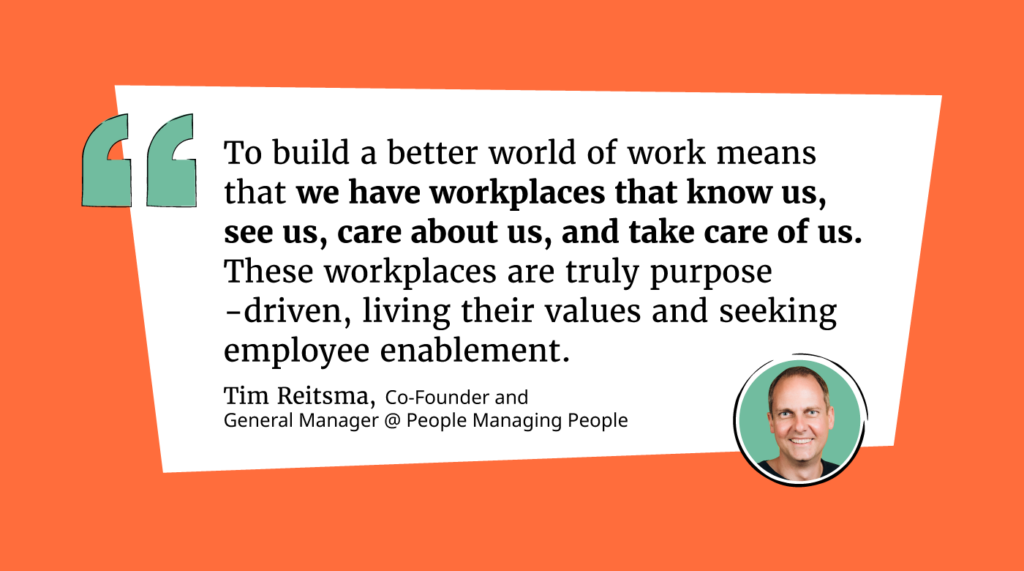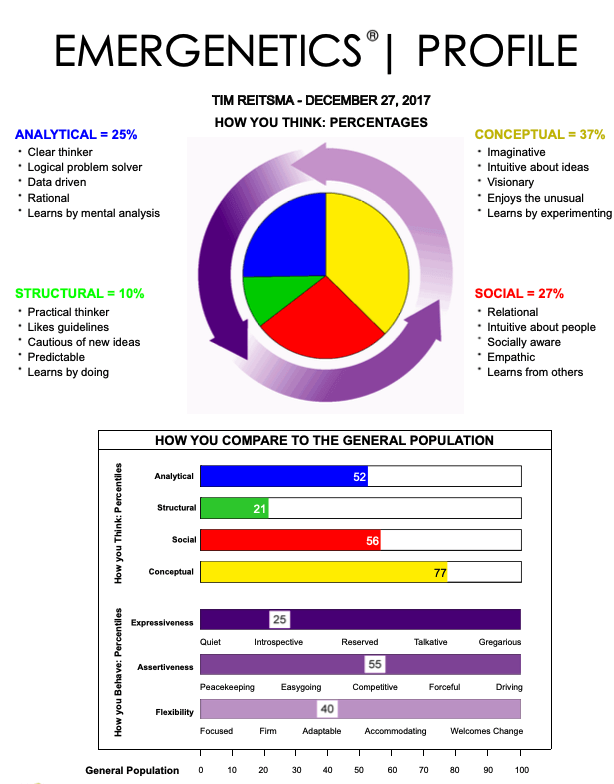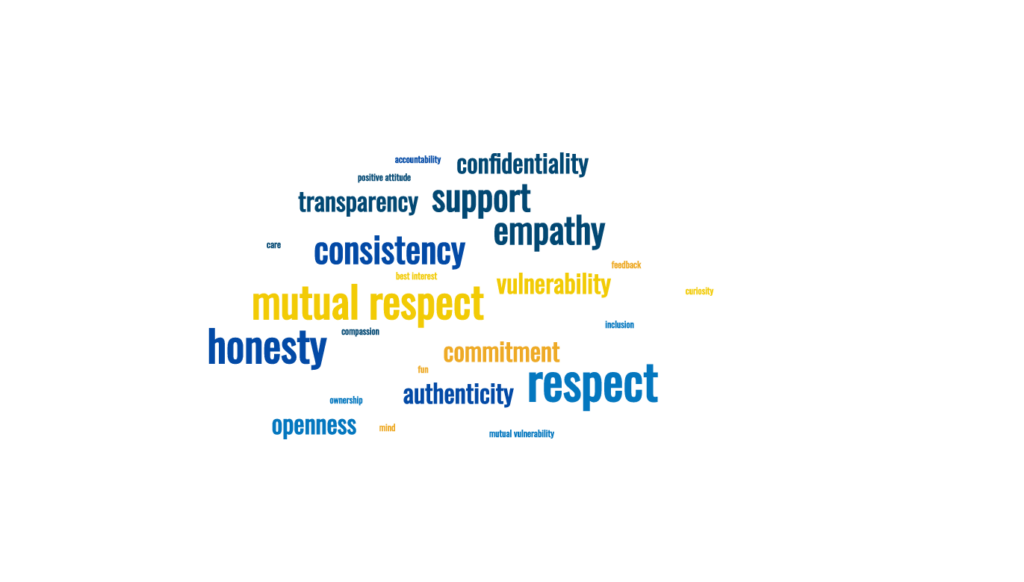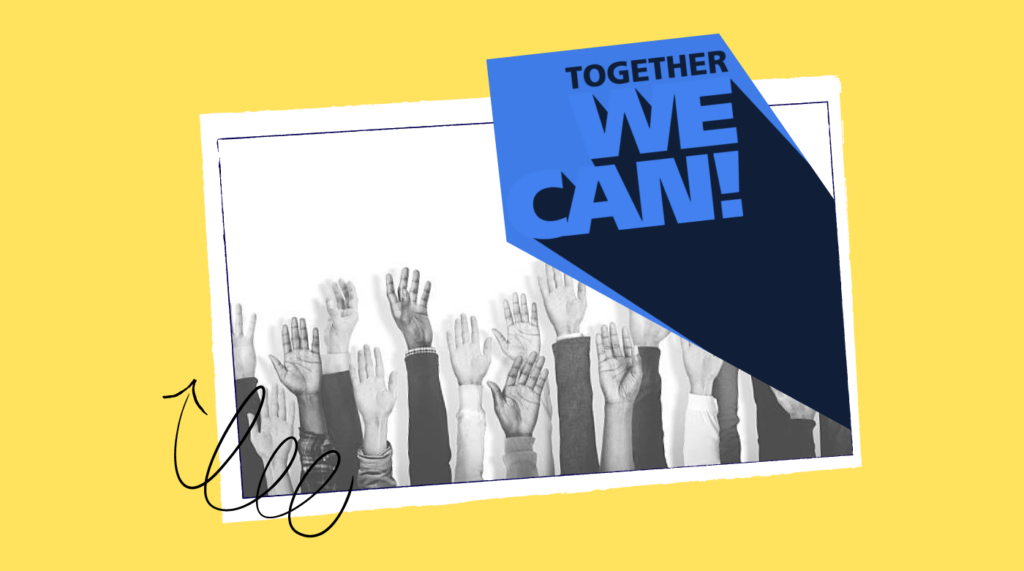I had a leader once who stood up at a company meeting and praised everyone’s hard work.
He referred to the company as a “financial Ferrari” (still not too clear what that meant but it got 300 people excited!).
He provided clarity on how well the company was doing and thanked everyone for their contributions.
A few days later, he called the management team into his office.
We all sat down, looked at each other, and then he said something along the lines of “By the end of the week, give me the names of two people we can fire. We are making our topline revenue target but we need to increase profitability. We also need to look at ways to get more money from our customers so let’s increase shipping costs.”
To say we were all shocked would be an understatement.
Just a few days ago we were told we were doing so well but, just a few days later, we’re being asked to squeeze more from our customers and fire people we deemed as not needed.
You see, this leader provided praise and was able to get the company #firedup.
He cast out a vision and rallied the organization but, behind closed doors, there was a different agenda.
Shortly after, many people quit, some with jobs to go to and some said “No job is better than this job.”
This is not how we build a better world of work.
We don’t misguide, we don’t lie, we don’t live two separate identities (public and behind closed doors), and we don’t cheat.
What we need to do is lead by example (people are watching), live with integrity (check out Rob Chesnut’s podcast), be honest, create and foster trust, lead with empathy and compassion, be transparent, and truly care (or give a damn).
We have three choices when it comes to building a better world of work. We can choose to:
- Ignore what is going on around us
- Work at changing our organizations
- Change companies, jobs, careers
I call this the “Change, Change, or Change Model”.
In some cases, choose option three and run!
But in most cases, please don’t be apathetic and just concede. Choose option two!
The World of Work is Broken and You can Help Fix It!
Just read the business news today and you will find articles written about corruption, stealing, abuse, coverups… the list goes on.
You’ll also find numerous articles about high levels of distrust, turnover, low levels of engagement, and even lower levels of motivation.
Again, the list goes on, I went down this rabbit hole and it gets depressing really fast. Here is a list of a few stats in case you aren’t convinced.
There are countless examples that demonstrate we need to focus on building a better world of work so what’s holding us back?
This article focuses on a few key areas where we can build a better world of work (by no means the full list). It’s a bit of a manifesto based on conversations with various business professionals as well as my insights over the years.
The goal is to provide actionable steps we can take today to start on the path to build a better world of work.
What Does It Mean To Build A Better World Of Work?
At People Managing People, we have asked dozens of leaders this question, “what does it mean to build a better world of work?” and the answers are so inspiring (check out the video here).
Sure, this isn’t a scientific study or even a representative sample size. But, there is a common thread that I’d like to pull out in all the responses: humanizing the workplace.
As executive leadership coach Lolly Daskal says ”Humanizing your workplace starts with acknowledging the people you work with and do business with. It means taking every opportunity to recognize and praise those who contribute on a daily basis for their efforts and achievements. Remember that everyone there is a person first and a working person second.”
To me, humanizing the workplace means recognizing everyone for who they are, what they do, what they bring, and what they can achieve.
It means treating people as people, not a number in your HRIS system. It means treating people with respect and having honest and caring conversations. It means we truly care for people’s well-being, inside and outside the workplace.
What is interesting is that none of the comments included things like hybrid/remote work, 4-day workdays, perks and benefits, and popular workplace trends.

This is what it means to build a better world of work.
But you may be asking “How do we actually achieve this?”
Tough question but let me throw this at you.
The answer isn’t implementing a 4-day work week, scrapping the office, unlimited vacation, etc.
These are fantastic outcomes of building a better world of work, but they aren’t the solution.
For example, if we scrap work hours (no more 9-5) for a “create impact and outcomes approach,” but we have high levels of distrust, what do you think will happen?
I am guessing, people will still leave, the quality of work will suffer, and customers will be unhappy. BUT, “look at us, we don’t have work hours!”
So, back to the how. How can we achieve a better world of work?
More on this shortly, but the short answer is by looking internally at our own businesses and companies. By getting clear on:
Our purpose, our why
- Why are we in business? Why do we exist? (Check out Simon SINEK’s Book Start with Why!)
Our values
- Without them, we have no idea how to make decisions, we have no idea if we are staying true to our company!
Our people
- People build businesses and without listening to our teams, we are missing out on valuable insights and information!
When we humanize the workplace, and I mean truly humanize it, we will see progress with building a better world of work.
If we continue to treat people as a commodity—a simple means to profit and a cog in the machine—we will not achieve this.
But it is important to state that every company is different.
What works for my company may not work for yours and that’s okay! In fact, it’s awesome!
But the point is, be clear on your purpose, your values, and the people you need to achieve greatness.
How Are We Going To Build A Better World Of Work?
Where to start? How are we going to build a better world of work?
Is there a formula or secret code that we can crack and BAM, everything is better?
Ha, no, it’s not that easy.
Why?
Because we are human and we hold different values, beliefs, strive for different outcomes, and have different approaches to life.
1. Purpose and values
Have you sat down and truly discovered who you are?
Cheesy, yup, but also powerful.
Defining your personal purpose and values helps us navigate life.
And guess what, each of us holds different values!
My values are Faith, Family, Authenticity, Curiosity, and Fun.
If any of these are being compromised, I feel it.
Just recently, I sat down and asked myself why I was feeling down and out.
I discovered it’s because my values of curiosity and fun are non-existent. This then helped me navigate a tough conversation at work where I shared how I was feeling. Now we’re unpacking how we can get more curious (instead of “this is the way, period”).
Companies need to define their purpose (“why the heck do we exist?”) and their values (what will we live by, make decisions by, stand our ground on).
Don’t pull an Enron (new catchphrase). Don’t write down purpose and values and bury them in a handbook or an about us page!
Live by them!
Inspired Action: How to Define your Purpose and Values
- Define your company purpose if you haven’t done so already.
- Pull the entire company or, at a minimum, your leadership team together for a full day and flesh out “Why are we actually a business? Why do we exist? What value do we bring to the world? What change do we want to bring to the world?”
- Example: A leading cleantech company’s purpose is “a world where renewable energy is the only choice”. They live by this and it guides every decision.
- Pull the entire company or, at a minimum, your leadership team together for a full day and flesh out “Why are we actually a business? Why do we exist? What value do we bring to the world? What change do we want to bring to the world?”
- Define company values if you haven’t done so already. Or re-define them if they aren’t what you live by:
- Survey the company and ask people the following:
- What is one of our superpowers and why?
- What is one thing we live by and don’t compromise on?
- What do you love about working here and why?
- Core values will emerge! Bonus step is to have everyone define their own core values.
- Survey the company and ask people the following:
- Seek continuous feedback on the purpose and values. This will highlight where something is not right or where you are excelling.
- Example: a leading tech company has diversity as a core value, but they weren’t seeing a mix of candidates being hired. They stopped, reworked their recruiting process, and now are changing their industry by providing opportunities for a multitude of underrepresented demographics.
2. Learn about each other
Guess what, not everyone in our teams and organizations is the same!
We think differently, work differently, process differently, and contribute differently. And this is what makes every workplace so unique!
If we assume everyone thinks like me, processes like me, and contributes like me, guess what, we are wrong.
Consider this, we often identify as either an introvert or an extrovert.
But, when it comes to our teams, do we take time to learn this about people, or do we just assume “Tim is quiet and never contributes in meetings”?
One example of a fun assessment to do with your team is Emergenetics to learn more about each other. Or take a strengths test. Or define your personal core values.

Inspired Action: How to learn more about each other
- Have everyone take the highfive.com strengths assessment (it’s free)
- Share the results in a team meeting and have a conversation about them
- Post them in your Slack channel, intranet page or somewhere you can quickly reference.
- If you have a budget, hire an Emergenetics consultant to learn about how each other thinks and processes information.
- Ask and document the following:
- What’s your favorite thing to do outside of work?
- What gives you energy and what drains your energy?
- What’s a fun fact about you?
3. Build organizational trust
Let’s imagine for a minute that you had a terrible sleep because your 4-year-old crawled into bed with you. She had a nightmare and wanted some connection and cuddles.
In the morning, you realize you slept through your alarm, are running late for a meeting, and feel terrible because, well, life happened.
Or another scenario, you’ve been diagnosed with a health condition. While you’re relieved there are answers to what has been going on, you’re fearful about how this may impact your job and career.
Do you pretend everything is alright? Do you put on a smile, wipe the sleep or tears out of your eyes, and dive right in?
I’d say no.
There isn’t a right or wrong answer but here’s something to consider: would we hide our emotions from other people in our lives?
I am guessing that you would tell friends, family members, and other loved ones what’s going on. So why don’t we show our true selves in the workplace?
I bet trust and fear have something to do with this.
Ask yourself this question—“What does trust mean to me?”
Trust holds many meanings. Some people give trust unconditionally and some feel that trust needs to be earned.
Do you trust that the person hired to work with you has the skills and aptitude to do their job?
Likely!
Do you trust the barista to get your coffee order right and made without contamination?
Likely!
In Patrick Lencioni’s book, Five Dysfunctions of a Team, trust is the foundation for all teams and companies.
What does this have to do with building a better world of work? Well, when we trust the people we work with, we are likely to show up as whole selves.
Years ago, sitting in my office deep in work, a colleague came in, closed and locked the door, turned down the blinds, and sat down.
I was a little taken aback. But what he shared with me forever had an impact on my life.
He looked me in the eyes and said, “I want to kill myself. I don’t want to be here any longer, I don’t know what to do.”
As I write this, tears came to my eyes for a few reasons. He trusted me with this deep and sharp pain and we were able to get him the help he needed.
You see, trust plays such a foundational role in our relationships and our organizations.
This colleague may have gone to someone else if I wasn’t there or, worse, may have ended his life.
But he trusted me to come and share what was happening and I am ever grateful that he did.
Inspired Action: How to build organizational trust
- Start each team meeting, 1:1, or each day with a team energy check-in. A word to describe how you’re feeling and a number between 1-10 to rate your energy level. And be honest! If you have low energy, share that! Over time, people will start sharing from a place of trust and authenticity.
- We do this at every team meeting. It has helped us connect on a deeper level and has allowed us to get curious with each other.
- Define what trust means to you and share that with your team. If you lead a team, host an interactive session on what trust means and have everyone share what trust means to them.
- Go around the room (in person or virtually) and have everyone provide answers to the following questions:
- What does trust mean to me?
- What do I need to have in order to feel trust?
- What breaks trust?
- Create and publish your team’s definition of trust.
- Go around the room (in person or virtually) and have everyone provide answers to the following questions:

4. Lead with clarity
Imagine you are headed to a new destination without a GPS (yes, that is still a thing. My dad uses landmarks, not maps).
You then decide to change your destination. There is no map to re-route you. You are simply driving in a direction that you think is the right way.
Lack of clarity in destination, or at least a landmark to guide us there, causes confusion. And as my mentor (who doesn’t know he’s my mentor) says “when you confuse, you lose."
Just like in business, without clarity of vision and values, we are just going to end up spinning in circles.
I worked for a company that made sure everyone knew where we were going and how everyone could contribute to achieving the vision. They also made every decision with their values front and center.
If a business decision was going to compromise the vision and values, it was set aside. The company stayed true to its identity and the employees applauded this.
The company is widely successful because they’ve stuck to their core vision and values, and lead with a high sense of clarity.
Inspired Action: How to achieve clarity
- Host an interactive session on your company vision and values. Start with the exec team and then move into the next level of leadership. If the leadership isn’t on the same page, then our teams will likely be confused too.
- Have everyone in the room write down the company vision and values (remember, it's a safe space)
- If there are gaps in what people know, there is a great opportunity to strive for clarity.
- Define what the value means to each team member.
- Define approved behaviors for each value.
- Have everyone in the room write down the company vision and values (remember, it's a safe space)
- Have each team member tell everyone how they are going to contribute to the vision and values at every team meeting.
- Note that not everyone may be excited about the vision and values of the organization, and that is OK (in my opinion). If someone behaves in a way that is counter to the company, get curious as to why!
5. Get authentic curiosity
Pause for a moment and ask yourself, “When was the last time our team had a meaningful conversation where we sought to learn about each other?”
There are two types of curiosity—authentic and self-serving.
Authentic curiosity
Seeking to learn from a place of honesty, empathy, intentionality and genuine interest. Authentic curiosity holds no agenda. It’s about “we”, not “me”.
Self-serving curiosity
Seeking to learn from a self-centered place, a place to use information to propel oneself. Self-serving curiosity holds an agenda. It’s about “me”, not “we”.
When we seek to learn about others for our own personal gain, this is self-serving curiosity. It’s the “how will this benefit me” or “how can I use this for my own advancement” mindset.
When we get authentically curious, we are genuinely interested in learning more about others to form a deeper connection with others.
Curiosity deepens relationships and opens up opportunities to truly understand each other. It allows us to share our different perspectives and beliefs.
When we truly embrace authentic curiosity, we are not on a mission to change someone else’s perspective. But we are truly there to learn and engage.
As my 8-year-old son would say “tell me more!”
When he listens to one of my silly (or more often mundane) stories, he sits there, looking at me intently, and acknowledging what I am saying. This is authentic curiosity.
When we are authentically curious, we gain trust, friendship, connection, knowledge, and wisdom.
Inspired Action: How to build authentic curiosity
- Connect with someone in your organization and ask them the following:
- Where were you born?
- How many siblings do you have and where are you in the order?
- What is one thing that you’ve always wanted to try or do but haven’t?
- What’s holding you back?
- Level up your listening skills with active listening
- Next time you are getting curious, pay attention to what, if anything is distracting you, and work to remove those distractions.
- Pay close attention to the other person’s tone, body language, words they are choosing, and keep your reaction in check.
- List out everyone in your team and answer the following questions about them. This is just a sample but the point is, how much do you know about your teammates?
- What do they like to do outside of work?
- Are they in a relationship or not?
- What’s their favorite food, snack, drink?
- What’s their favorite thing to do when not working?
- What breaks their heart?
6. Lead with empathy and compassion
“Connect with empathy and lead with compassion.”
Empathy is “I hear you” and compassion is “I am here to help”.
This is truly the essence of humanizing the workplace.
This doesn’t mean we accept all behaviors and all attitudes. What this means is, when we lead through the lens of empathy and compassion, we seek to hear where the person is coming from and, when needed, we are here to help.
If someone shows up for work and is always grumpy and defensive, do you reprimand them and tell them to adjust their attitude?
I would hope not, at least not right away!
Ask questions, dig into what’s going on. You may be met with a guarded heart but maybe not!
You may be met with an answer that shocks you or surprises you.
Maybe someone has an addiction that they need treatment for or maybe they are struggling through an abusive relationship.
Build trust, approach with authentic curiosity, and be there with empathy and compassion.
Inspired Action: How to build empathy and compassion
- Have a real conversation with someone today. Don’t ask “how are you” but ask “what is top of mind in life today”. Be authentically curious.
- Pay attention to behavior changes. This can be done while working in an office or remotely.
- If there is a noticeable change in someone, have a real conversation about it.
Check out this article: How To Be More Empathetic?
7. Create connection and belonging
We are moving into a world where remote or hybrid work environments are prevalent. This new world of work is exciting, yet it has created new pressures for organizations.
I recently heard someone say, “we either belong or we leave”.
A strong statement, but consider this: would you stay somewhere if you truly didn’t feel like you belonged?
Whether you are in the office, hybrid, or remote, a sense of belonging should be a top priority for you.
And this isn’t an HR project initiative, it needs to be a leadership initiative!
Why?
Because leadership sets the tone for the organization. Leadership needs to model out the behaviors they desire from their teams.
When people feel connection and a true sense of belonging, they will perform. They will feel trusted and, in turn, will contribute more to the company culture.
It's that simple!
Inspired Action: How to create connection and belonging
- Take stock of what you really know about your team outside of work. How many kids, are people married, what do people like to do after work, etc.
- If you know enough to have conversations about people’s life events, their hobbies or interests, you will start building a deeper connection.
- Create connection points between team members and leadership
- Skip level meetings
- Start an Employee Resource Group (ERG)
- Collect and action feedback.
8. Focus on diversity, equity, and inclusion (DEI)
If everyone in our organizations looks, thinks, and behaves the same, and comes from the same background, how will we ever grow?
In Anthony Clay’s podcast, we talked about “distance traveled”. This means looking beyond ethnicity and gender into areas that aren’t visible, such as family background, upbringing, and beliefs.
DEI isn’t a bullet point on a to-do list, it’s a journey.
A long and sometimes hard journey but one that will award us with unique perspectives, new insights, and, ultimately, inclusivity.
Inspired Action: How to embrace DEI
- Leadership team buy-in and direction is critical. Leadership team members need to demonstrate to the organization that they care and are taking action.
- Host a town hall on DEI. Talk about why it matters, what you plan on doing about it, and how you will address gaps.
- Take a gap analysis survey such as this one.
- Set tangible goals around DEI. If you can’t measure things, how will you know you are making a change?
- Change your hiring practices. Are you posting positions in a multitude of places? If all you have on your website are images of “white guys in suits”, you may only attract similar folks.
Who Is Responsible For Building A Better World Of Work?
It’s not just HR (P&C), the CEO, or the exec team. It will take every single one of us to build better workplaces.

An old but relevant story—who remembers Enron?
Long story short, a whole lot of Eron’s executives ended up being fired or jailed. They duped many investors and regulators and got caught.
But you know what one of their core values was?
Integrity!
That’s right, they claimed they were a business built on integrity, yet their actions were the exact opposite.
If you were in the room and witnessed what was happening, what would you do? Would you speak up or turn the other way?
This brings my point home. It’s up to each of us to build a better world of work!
This is where we can all have an impact, have some fun, and strive to build the workplaces we are proud to belong to.
Remember, it's often the micro changes that lead to the macro changes within our organizations.
Building a better world of work will take all of us.
BUT, there is one caveat: don't just share what needs to be done or fixed, share ideas on HOW we can fix things too."
“Let’s put the How into the What and the Why” - Tim Reitsma quote
Scrolling through social media (including your LinkedIn) is often filled with things that aren’t working.
The voices that we should care about are those who provide us the HOW to fix things.
Sure not everyone will agree and that’s fine. It’s not about convincing people they are right/wrong. It’s about sharing what isn’t working and how we can build better.
Conclusion
There are so many ways, ideas, and examples of how we can build a better world of work.
This is your time to shine and get curious!
If your company switched to no work hours, get curious with your leader and ask:
“So what does this mean practically? How will you hold me accountable? What’s the best way we can figure out a team comms strategy since I could be working while you’re skiing?”
And there are many people, not just leaders of companies and teams, who have great ideas about what we can change.
That’s why we started an interview series to hear from you! If we are able to collectively gather and share ideas, all we need is that spark from you to ignite a movement.
Small ideas planted in the right places will produce the right results within our organizations.
Related Reads:
- Measuring Chaos Tolerance Will Help Us Build A Better World Of Work
- Reassessing Productivity To Build A Better World Of Work
- Miscommunication Is Holding Us Back From Building A Better World Of Work
- Defining Our Weaknesses Can Help Us Build A Better World Of Work
- Building A Better World Of Work Starts With Self Awareness
- Flexibility Will Help Build A Better World Of Work
Also Worth Checking Out:


